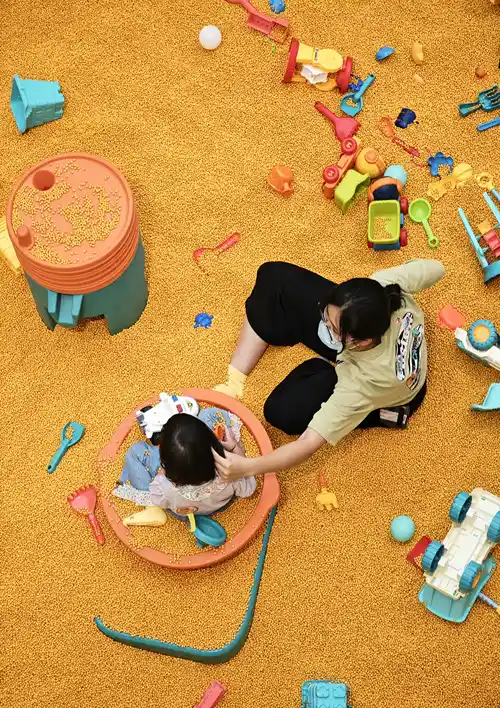What to Expect as a Med Student After Your 1st Patient Death
The first death of a patient represents a profound emotional turning point that reverberates throughout one’s career as a physician. In that critical moment, the shield of clinical detachment gives way to inevitable self-reflection.
Daryl Eber, MD, recalls a jarring case of an intubated patient who extubated himself and quickly died after coding. The incident occurred in 2005 while Eber was doing rounds as a medical student at Shands Jacksonville Medical Center (renamed UF Health Jacksonville) in Jacksonville, Florida.
Although the patient was not in his direct care, the swiftness with which death took the man has lingered with Eber for two decades.
Eber recounted the incident: “We were rounding in the cardiac ICU [intensive care unit], going room to room. We got into the fourth room, and everything was fine. An hour later, we’re standing there, and all of a sudden, everybody starts yelling and getting up. The guy had extubated himself. Somehow, he kind of came out of it, and he pulled the tube out; he was crashing, and he couldn’t breathe.”
Because he wasn’t properly sedated, the patient had tried to take the endotracheal tube out, according to Eber. Although an uncommon occurrence, if a patient is not being properly managed or sedated, they may wake up in a state of delirium and high anxiety, attempting to remove the breathing tube to regain a sense of normalcy or relief.
But this unplanned removal can lead to serious complications like respiratory distress, laryngeal injury, and death.
“We just had rounded on this poor guy,” Eber said. “Somehow, he woke up. Nobody was managing, I guess, keeping him sedated. And then he pulled the [tube] out, and he was dead within a minute or two. If you have something that’s basically down your throat and you can’t breathe, can’t move air between your lungs, because you’re fighting for a breath, [extubating] is a totally natural reaction.”
Eber — now a diagnostic radiologist and nuclear medicine physician in Miami who owns and operates 3T Radiology & Research, Miami Beach, Florida — said this incident was just one of many instances that showed him how precious life is.
Though doctors in various specialties and subspecialties may experience the death of patients more often than others, compassion and empathy should always take center stage. Patients are real people with families, and this can take a toll on doctors as they navigate life and death.
Even today, Eber said, dealing with death isn’t easy. “As a medical student and as a doctor, you have to understand [a patient is] somebody’s family, right? They’re somebody’s father, somebody’s mother, somebody’s brother, somebody’s sister.”
In one of his first experiences with death, Joshua Rarick, MD, now a fourth-year general surgery resident at Covenant Hospital in Saginaw, Michigan, recounts a case in which an 18-year-old man was rushed into surgery after suffering at least five gunshot wounds.
“I was on call the night that he was basically dying, and I had to go and talk to the mom because my attending wasn’t there,” Rarick recalled. “He’s 18, and his mom thinks that he’s going to recover.”
At the time, Rarick was a second-year general surgery resident at MyMichigan Medical Center Saginaw, Saginaw. One of the bullets had clipped part of the man’s left lower lung, leading to a resection of that part of the lung. Another bullet had lodged into the man’s spine, leaving him paralyzed from the waist down.
“It’s one that I still remember to this day, because he was a young guy,” Rarick said. “We were able to do everything we could to somewhat stabilize him, and he was with us on our service for a whole month. His mentation came back; he was awake.”
Rarick and his team felt the man was progressing. But they couldn’t wean him off the ventilator. The man eventually went into acute respiratory distress syndrome (ARDS) and never fully recovered. ARDS is a serious condition where the lungs are damaged and cannot properly exchange oxygen and carbon dioxide, leading to shortness of breath and other symptoms.
“He got an infection, and his respiratory status deteriorated quickly,” recalled Rarick. Rarick then had to explain to the patient’s mother that her son was dying. “You try to be as empathetic as possible, but in those moments, they really don’t want to hear it.”
Rarick and other residents at Covenant Hospital present cases every week where a patient died, looking into what they could have done differently and what to prevent in future cases.
William Schaffner, MD, an infectious disease specialist at Vanderbilt University School of Medicine, Nashville, Tennessee, recalled the first wave of the HIV epidemic as it swept through the world.
“The infectious disease issue that brought this home, not only to me, but to every infectious disease doctor in the country, was HIV/AIDS, because all of a sudden, we were on the front line dealing with young patients who suddenly had, in the early days of HIV and AIDS, a fatal viral infection,” said Schaffner.
Schaffner and other infectious disease specialists maintained relationships with HIV patients that extended over time, which was unusual in the sense that infectious disease specialists are frequently “the cavalry that comes in and puts down the insurrection of the infection,” said Schaffner.
Infectious disease specialists became long-term doctors — the primary care physicians, essentially — for many people diagnosed with HIV. Patients had to deal with the trauma of realizing that their lives were going to quickly come to an end, as there were not highly effective treatments for HIV or AIDS at that time.
“That was a very challenging, often wrenching experience for the infectious diseases’ community,” Schaffner said. “I can remember any number of patients with whom I became close and helped them deal with what was then thought to be a scandalous infection that often alienated their own family members, and so the doctors became quasi-family members. Sometimes, we were the source of the greatest support that these patients had.”
“When physicians confront death, it may be perceived as a failure and a reflection on them and their responsibility, and all those factors layer into their response,” said Holly Prigerson, PhD, director of the Center for Research on End-of-Life Care at Weill Cornell Medical College, New York City.
Prigerson published a study in Annals of Internal Medicine that examined how the COVID-19 pandemic impacted bereaved family members and offered practical guidance for physicians who had to give compassionate support in those challenging circumstances.
The study emphasized that when speaking with families immediately after a patient’s death, physicians should voice heartfelt condolences using the patient’s first name to honor their memory and demonstrate genuine empathy.
Some may try to “fix” the situation, but this isn’t advised. Instead, it’s best to remain present, listen, and provide space for the family members to grieve.
It’s imperative to ease the burden, guilt, and regrets of the surviving family members by “answering their questions, [such as] ‘could it have been prevented? Were they in pain and suffering?’” said Prigerson.
It’s normal for physicians and medical students — who often have the ability to save lives — to struggle with reconciling their lack of control over a patient’s death.
Said Prigerson, “In psychology, we talk about correcting cognitive distortions, and I think in medical school, you’re almost indoctrinated and socialized to think that you have enormous power. You do, but enormous power doesn’t necessarily mean enormous control.”
Two effective ways of coping with a potentially traumatic event like patient death include expressive writing and narrative disclosure, noted Prigerson. “Expressive writing and just discussing what happened, what troubled them about it, even negative thoughts and feelings,” she said, “[writing about it] is something everyone has available to them.”
As for advice for medical students who may have to deal with death for the first time and then any number of times after, Schaffner said it’s important to take care of yourself and maintain an open dialogue on the complex emotions felt.
“Have friends that you can share your experiences with,” he said. “Talking about this makes you realize that you’re not alone and having to deal with your own emotions. If things really disturb you, please reach out and get some professional help. Your institution will provide that. That’s normal. It’s not something to be ashamed of. Dealing with death is obviously serious and stressful. So, take care of yourself while you’re taking care of others.”












